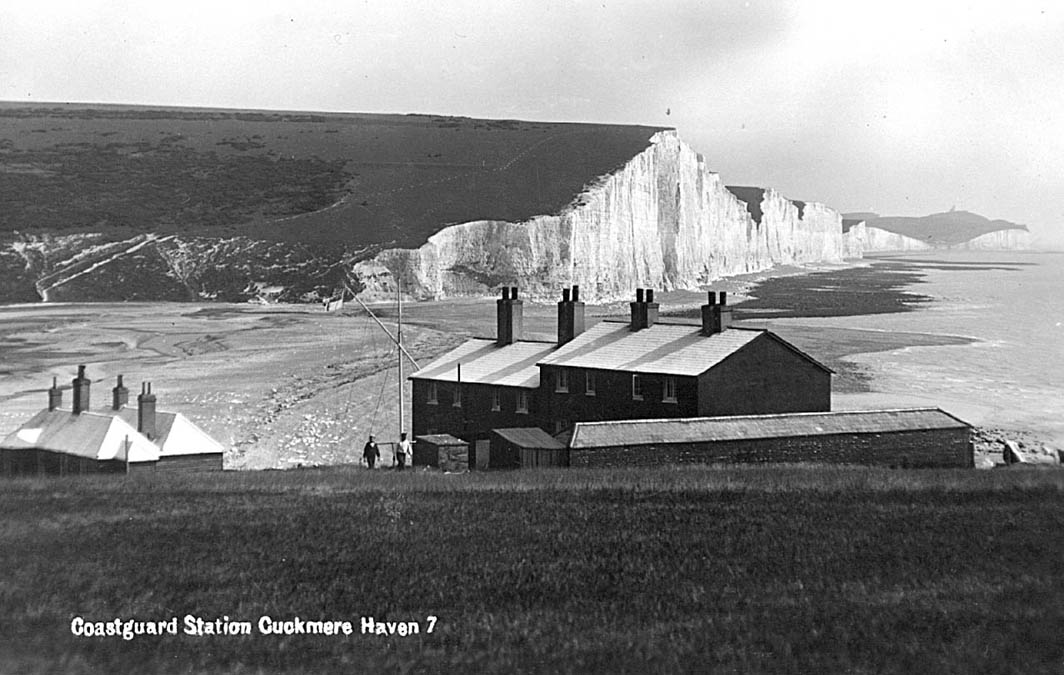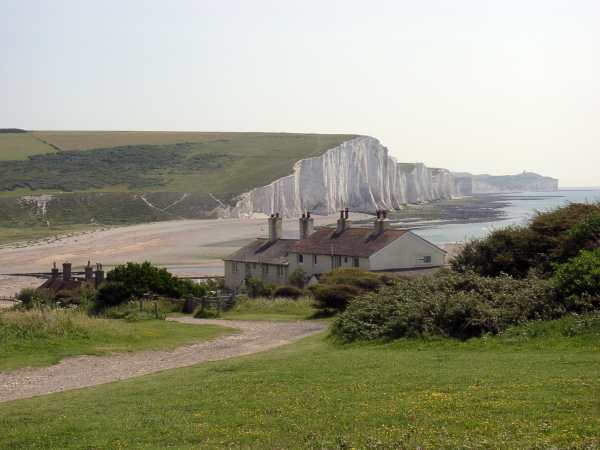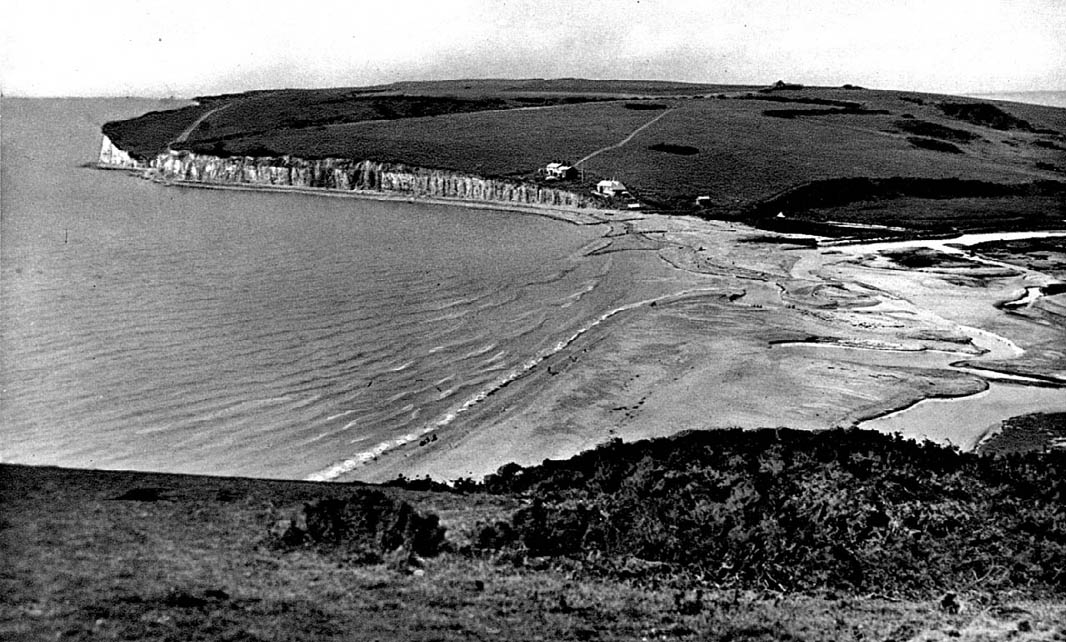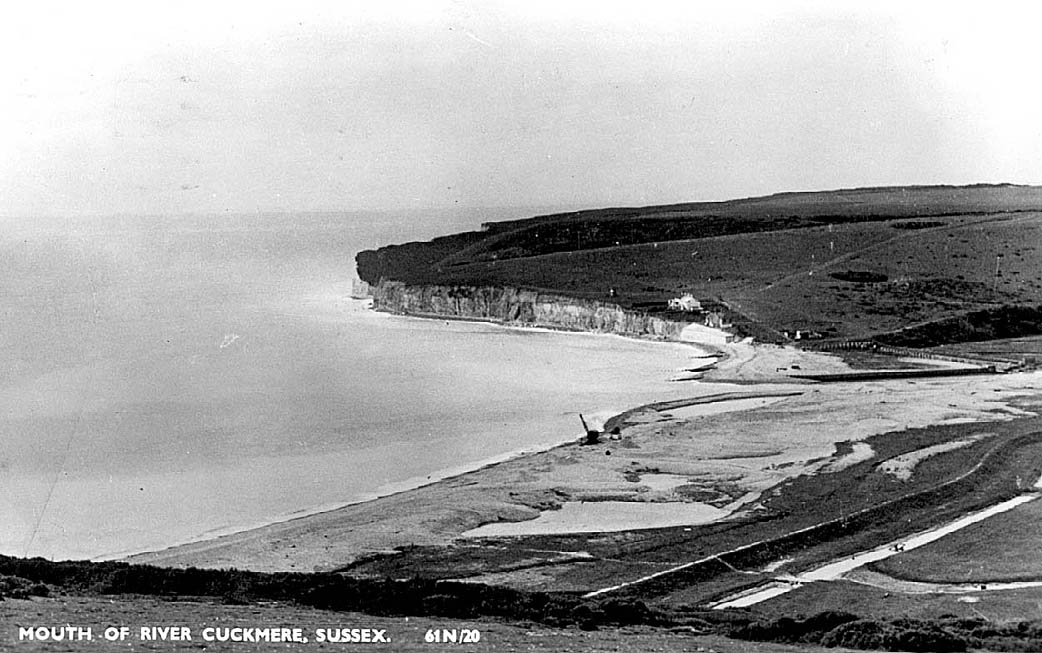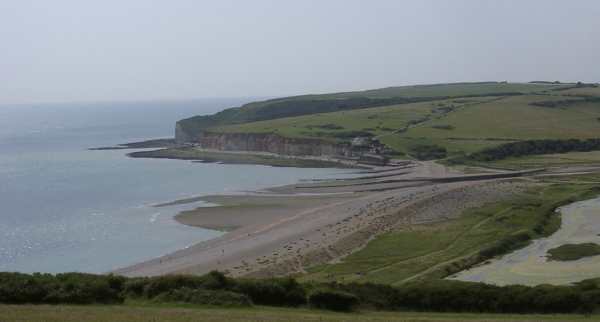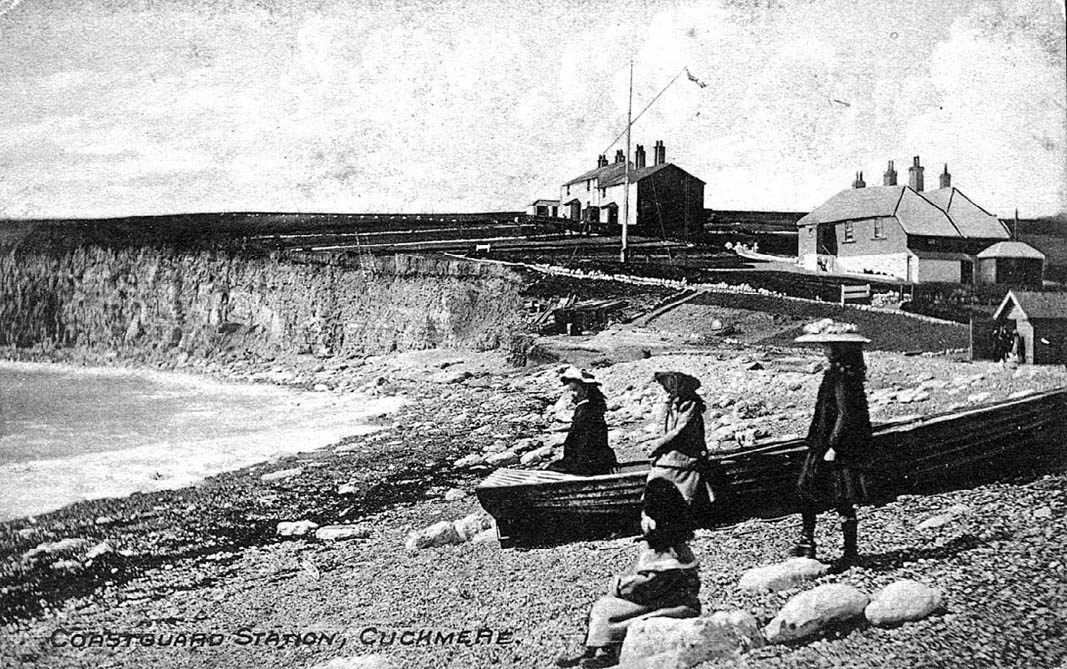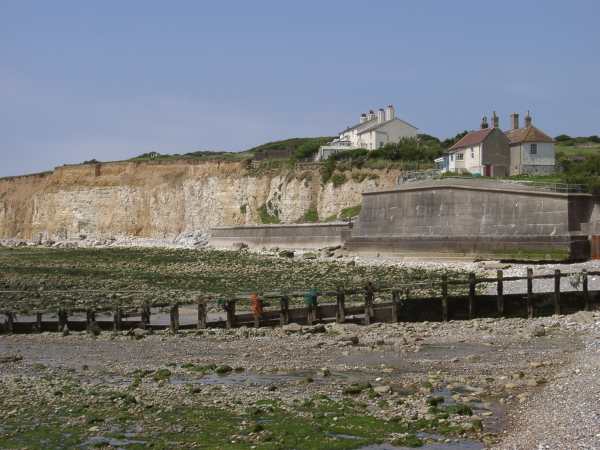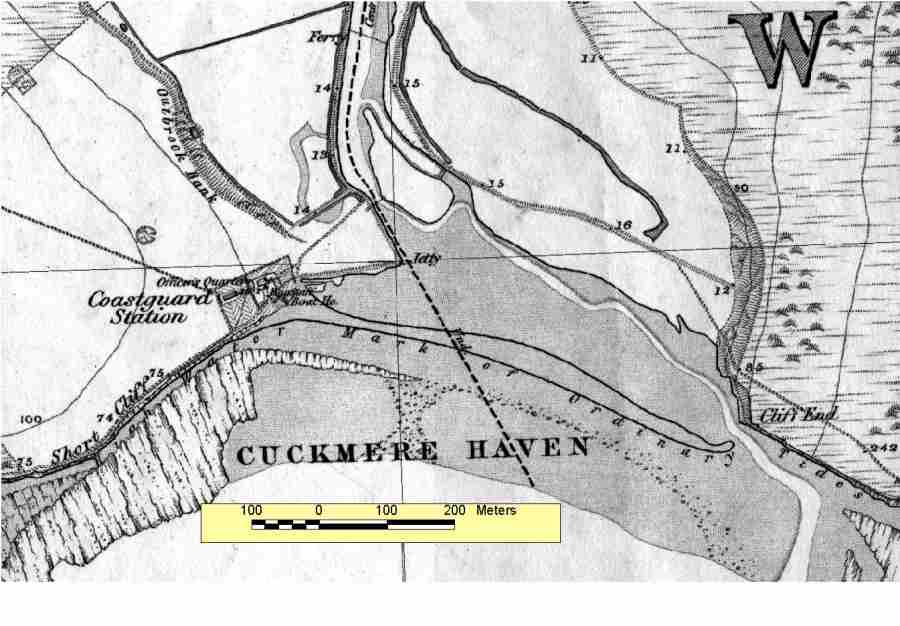| Cuckmere Haven and Seaford Head viewed from Haven Brow, the easternmost of the Seven Sisters in 1907. The photographer was the celebrated Fred Judge of Hastings, who is standing in the foreground with his brother. In the distance are the Coastguard Cottages, which were built well back from the cliff in the 1830s, but by 1907 had become closer to the edge due to cliff erosion by the sea. At the head of the bay are extensive spreads of shingle, transported from beaches further west by the prevailing waves. The Cuckmere River enters the sea through this shingle barrier, following more or less its existing course. Today, the mouth is fixed by massive wooden retaining walls, and is regularly dredged. In 1907, however, the river was allowed to find its own way through the shingle, with occasional help from local farmers, who used horses and ploughs to clear blockages. |
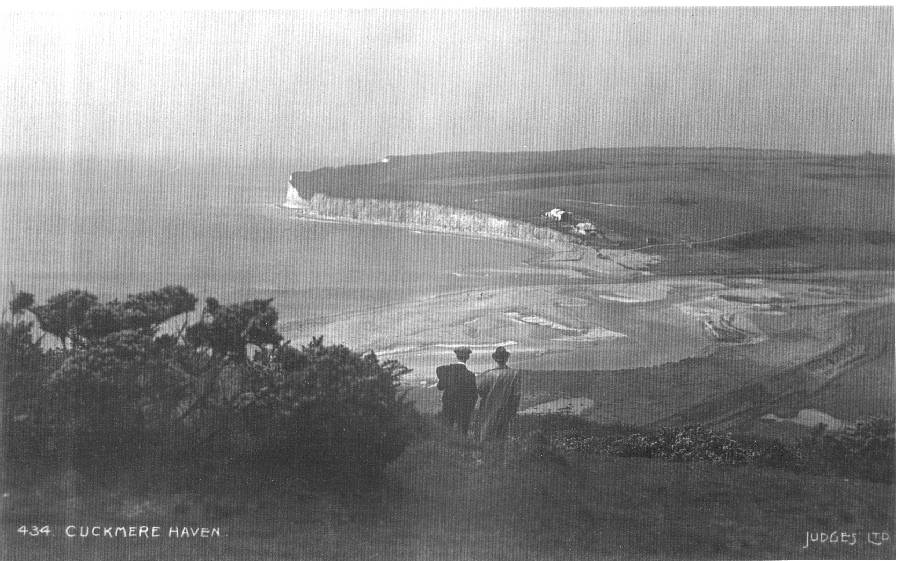 |
